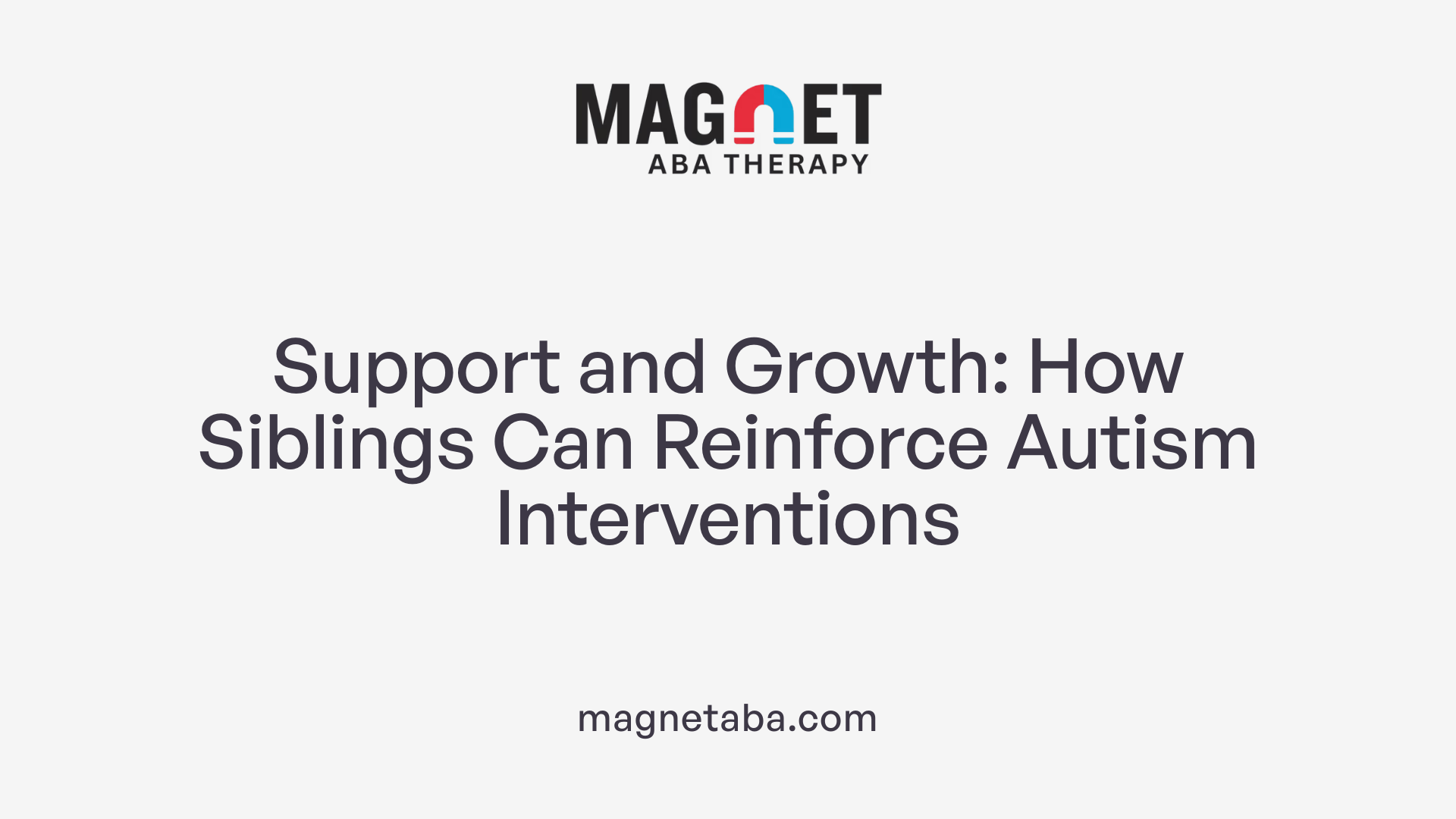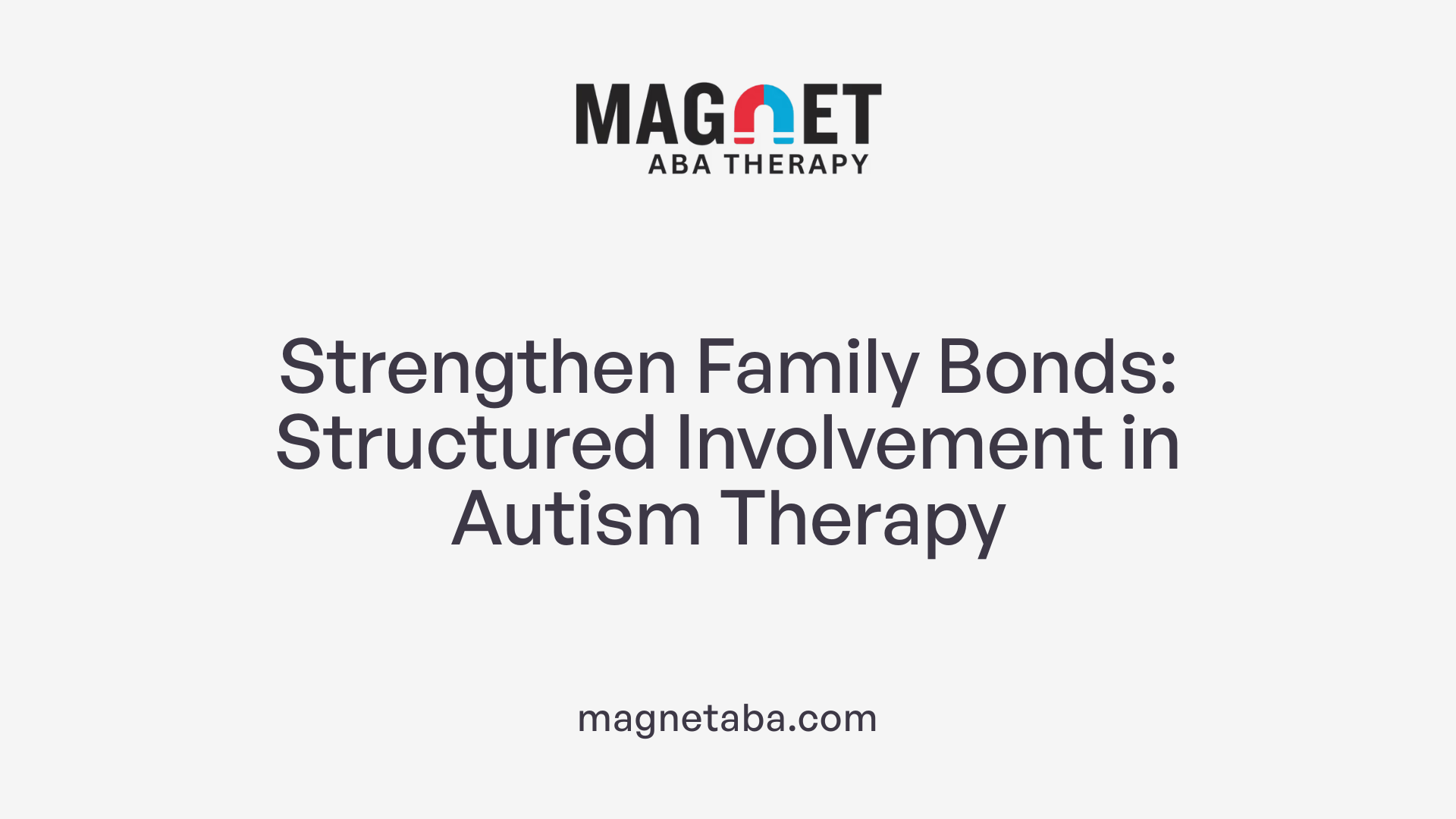Understanding the Role of Siblings in Autism Intervention
Sibling involvement in ABA therapy plays a crucial role in enriching the therapeutic process and strengthening family dynamics. When siblings participate actively, they gain a better understanding of autism, which fosters empathy and promotes a supportive home environment. This article explores how engaging siblings benefits children with autism, supports family relationships, and enhances therapy outcomes.
Enhancing Understanding and Empathy in Siblings

What are the benefits of involving siblings in ABA therapy for children with autism?
Involving siblings in ABA therapy offers numerous benefits, including enhancing their understanding of autism, fostering empathy, and promoting inclusive family environments. When siblings participate in therapy activities or observe interventions, they gain insight into the reasons behind their brother or sister’s behaviors, such as sensory sensitivities or communication challenges. This understanding helps reduce confusion and fear, replacing it with compassion and patience.
Siblings also often act as natural role models, reinforcing skills learned during therapy and helping transfer these behaviors into everyday interactions. Their involvement encourages a sense of teamwork within the family, strengthening emotional bonds and promoting a supportive environment.
Participation in shared routines, goal-setting, and joint activities can foster mutual respect and cooperation. Support groups and open family discussions further help siblings express feelings, address frustrations, and develop coping strategies. Overall, engaging siblings in ABA enhances family cohesion, improves social dynamics, and supports better therapy outcomes.
How does sibling participation influence therapy outcomes?
When siblings actively participate in ABA therapy, the effectiveness of interventions can increase substantially. Siblings serve as consistent, everyday role models, applying the skills and behaviors learned in therapy during their interactions. This reinforcement helps children with autism generalize skills across different settings, particularly outside therapy sessions.
Including siblings in sessions and routine activities creates a more comprehensive and supportive environment. They gain a clearer understanding of the therapy goals, which motivates them to assist and encourage their brother or sister. This shared approach promotes patience, understanding, and emotional resilience among all family members.
Moreover, joint activities and sibling involvement build stronger bonds, making children with autism feel more supported and understood. Such involvement also reduces sibling feelings of neglect or jealousy, contributing to a more harmonious home life and more successful long-term progress.
How can siblings support children with autism during ABA therapy?
Siblings can play a vital support role during ABA therapy by participating in shared activities and reinforcing learned behaviors at home. They can incorporate simple, positive reinforcement techniques, such as praise or rewards, to encourage desirable behaviors and help generalize skills in real-world situations.
Involvement begins with open communication and education about autism, helping siblings understand behaviors like repetitive movements or sensory sensitivities. When siblings are informed, they can respond with patience and empathy, reducing misunderstandings.
Siblings can also support therapy progress by acting as natural role models, demonstrating appropriate social interactions, and practicing turn-taking or cooperative play. Participating in therapy through joint goal-setting or engaging in shared routines fosters teamwork and shared responsibility.
Encouraging family activities, like arts, games, or outings that align with ABA objectives, not only reinforce skills but also enhance sibling relationships. Overall, supportive siblings contribute to a nurturing environment that promotes growth, confidence, and emotional well-being for children with autism.
Fostering Positive Family Environments Through Structured Involvement

How does sibling participation influence therapy outcomes?
Involving siblings in ABA therapy can significantly boost its effectiveness. When siblings participate, they gain a better understanding of autism and the behaviors associated with it, which helps reinforce positive behaviors in everyday settings. Siblings often act as natural role models, practicing social skills like turn-taking, sharing, and cooperation during shared activities. This ongoing practice outside the therapist’s sessions can promote generalization of skills.
Furthermore, siblings' involvement fosters a supportive environment, reducing misunderstandings and increasing empathy among family members. They can also serve as trained or untrained playmates, naturally embedding therapy principles in daily life. For example, a sibling might use positive reinforcement strategies learned in therapy to encourage desired behaviors.
Additionally, understanding sibling dynamics—such as rivalry or attachment—can help tailor intervention strategies to improve relational patterns, ultimately enhancing the child's progress. In contexts beyond autism, such as family recovery from addiction, sibling involvement has been shown to strengthen bonds and lower relapse risks.
While current evidence indicates promising benefits, more research is needed to fully understand how sibling participation influences therapy outcomes across different conditions and family structures.
Implementing Sustainable Strategies for Long-Term Benefits

How can personalized ABA plans and collaboration with BCBA professionals enhance sibling involvement?
Collaboration with Board Certified Behavior Analysts (BCBAs) and the creation of personalized ABA strategies are essential in fostering effective sibling participation. These approaches ensure that therapy goals are tailored to each child's strengths, challenges, and family dynamics. BCBAs help design interventions that promote positive sibling interactions, such as cooperative play and shared routines, which are critical for developing empathy and social skills.
Personalized plans consider the child's developmental level, sensory sensitivities, and communication abilities, making activities engaging and effective for everyone involved. Regular guidance from BCBA professionals allows families to implement techniques consistently at home, reinforcing learning and promoting a supportive environment.
This close collaboration ensures that siblings are not just passive observers but active participants in their brother or sister's growth process. By integrating sibling-focused strategies into therapy, families can nurture stronger bonds and create a cohesive community of support that benefits all members.
Building Stronger Bonds Through Active Sibling Engagement
Integrating siblings into ABA therapy is a vital step toward fostering a more understanding, empathetic, and cohesive family environment. By educating siblings about autism, involving them in therapy routines, and supporting their emotional needs, families can promote meaningful relationships that extend beyond treatment sessions. The collaborative efforts of parents, siblings, and professionals create a foundation for long-term success, enhancing the child's developmental progress and nurturing resilient family bonds. Ultimately, sibling participation not only benefits children with autism but also empowers entire families to navigate challenges with compassion, teamwork, and shared purpose.
References
- Help Siblings of Children with Autism Thrive - Strive ABA Consultants
- Enabling Siblings to Understand and Bond with Their Autistic ...
- Supporting Sibling Relationships with ABA Therapy
- The Role of Family in ABA Therapy Success: Engaging Parents and ...
- Sibling Involvement in Axis ABA Plans | Axis Therapy Centers
- Supporting Sibling Relationships with ABA Therapy
- A Guide for ABA Professionals to Navigate Challenging Behavior ...
- Supporting Sibling Relationships with ABA Therapy
- Help Siblings of Children with Autism Thrive - Strive ABA Consultants












